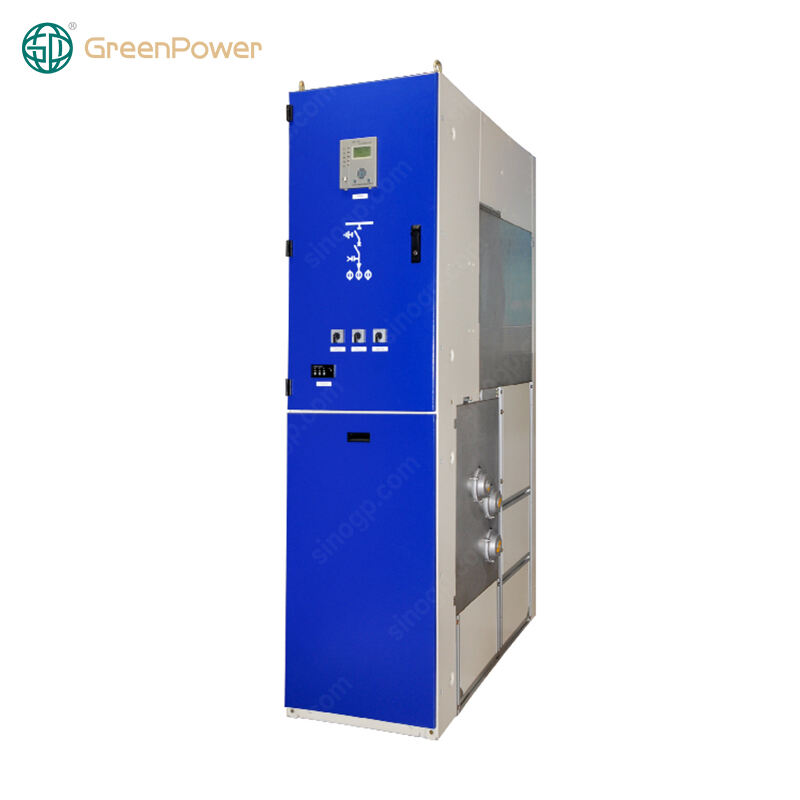Today’s power grids are built with a focus on efficiency, reliability, and safety, especially due to the increasing power demands from homes and businesses. Within the framework of a power distribution system, medium voltage switchgear connects high voltage transmission to low voltage distribution. Leading in the power switchgear solution industry, GPSwitchgear (https://www.gpswitchgear.com/) designs and optimizes high performance medium voltage switchgear to sharpen operational efficiency of the grid management system. Recognizing the efficiency boost of medium voltage switchgear to grid versatility assists in understanding the importance of medium voltage switchgear in the construction of flexible and enduring power systems.
Switchgears are built with the primary purpose of reducing the power loss that happens during the transmission and distribution of electricity. Power loss leads to operational costs being high as energy is wasted. GPSwitchgear’s medium voltage switchgears are built with low resistance materials and the design is such that the switches are easy to operate. For example, the busbars within the medium voltage switchgear contain highly conductive materials like copper or aluminum which serve to reduce resistive losses.

Loss of power and increases in resistance during voltage drops can be caused by dust and moisture getting into sealed designs of switchgears. Medium Voltage Switchgear minimizes these losses and ensures that a greater portion of electricity reaches the end user. This results in the greater efficiency of the power grid and decreases the costs of electricity for utilities and consumers.
The incorporation of variable renewable energy like solar and wind makes flexible management of power flow crucial for the efficiency of a power grid. These renewable sources are weather dependent and thus require the grid to dynamically shift power distribution in response to variable weather. GPSwitchgear provides Medium Voltage Switchgears with smart control systems that facilitate the rapid and precise re-direction of power flow. For example, if a wind farm is producing excess electricity, the control system can steer that surplus electricity to high demand areas, or to energy storage, and during times of low renewable energy generation, the control system can draw power from conventional generators to ensure the supply remains steady. This energy management system minimizes the risk of grid disruptions and energy waste.
Real-time management of power flow is what makes medium voltage switchgear essential for renewable energy adoption and enhancing the efficiency of the grid.
During grid downtime, power is unavailable for end customers, and the overall efficiency of the grid also takes a hit. Medium voltage switchgear also helps improve the efficiency of the grid by detecting and isolating faults in the system, thereby minimizing the duration of outages. GPSwitchgear's medium voltage switchgear includes integrated advanced protective devices such as circuit breakers, relays, and sensors that constantly monitor critical electrical parameters of the system (current, voltage, and temperature). When a fault event occurs (like a short circuit or overcurrent), medium voltage switchgear’s fault detection sensors initiates a response and the circuit breakers trip, isolating the faulty grid section in a matter of milliseconds. This limits the chances of a fault spreading to the rest of the system. For instance, if a fault is detected in a medium voltage switchgear unit serving a residential neighborhood, power isolation allows the switchgear to maintain supply to commercial districts while bypassing the load. By drastically reducing downtime, medium voltage switchgear promotes the continuous operation of the grid, thus maximizing efficiency and reliability.

As power grids adapt to shifting priorities, medium voltage switchgear contributes to both modernization and scalability. These elements are critical for long-term operational efficiency. GPSwitchgear’s medium voltage switchgear is compatible with advanced smart grid technologies, including remote monitoring and digital control. These technologies let utilities observe switchgear operation and grid flow in real time, remotely identifying and adjusting inefficiencies without having to send personnel to the site. This smart technology enables proactive maintenance that prevents failures, grid inefficiencies, and costly unplanned maintenance. Moreover, medium voltage switchgear’s scalability is another benefit. Modular designs mean expansion and upgrading are both possible as the grid grows. For instance, power switchgear in medium voltage can be modified to add circuits to increased capacity for power. This adaptability lowers capital costs, and reduces disruption to the grid, enhancing the modernization of power systems. This makes medium voltage switchgear a practical and cost-efficient solution.
Grid efficiency is cumulative, and a loss in one component of the system will trigger accidents and eventually long operational impacts. This impacts the system’s profitability and safety.The switchgear also incorporates safety mechanisms like interlocks to prevent access to live components during maintenance and grounded fault protection to mitigate electric shock hazards. Ensuring safe grid operation reduces the chances of equipment failure and human oversight. These are the two primary reasons inefficient grid functioning occurs. Take the case of medium voltage switches shielded from the elements like storms. They allow the grid to function optimally during harsh weather, eliminating the need for costly repairs or power restoration efforts after an outage. Such consistency in power maintenance translates to operational efficiency in the grid and reduces costs associated with equipment repairs.
 Hot News
Hot News2025-11-10
2025-11-07
2025-11-05
2025-11-04
2025-11-03
2025-10-25